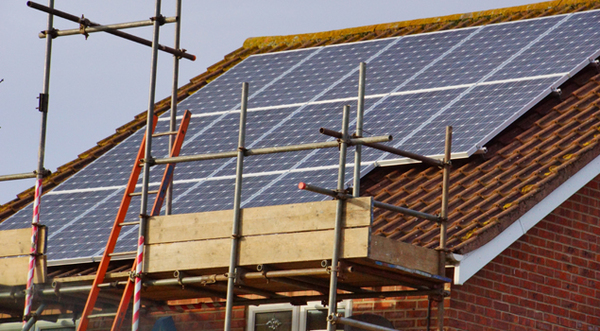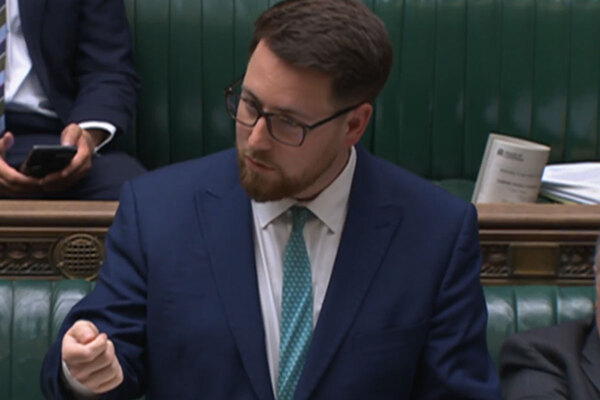You are viewing 1 of your 1 free articles
 Jules Birch
Jules BirchZero sums
 Jules Birch
Jules BirchMinisters once promised that Britain would lead the world on zero carbon homes. Do we now just lead the world in hot air?
The 2016 target for all new homes to be zero carbon seemed genuinely revolutionary when Gordon Brown and housing minister Yvette Cooper first announced it in 2006. Questions about practicalities and costs were brushed aside as they argued that the target would spark the mass adoption of new technologies, drive down costs and even open up vast new export markets for British firms. As Cooper put it at the time:
‘In 10 years, all new homes should be built at a zero carbon rating. No other country has set that sort of timetable or ambition but I believe that we need to do it to drive the environmental technologies of the future and ensure that we are building the homes of the future.’
Eight years, and six housing ministers, later and today’s Queen’s Speech promises that ‘legislation will allow for the creation of an allowable solutions scheme to enable all new homes to be built to a zero carbon standard’. So far, so good. The Liberal Democrats even reached back to the days of Brown and Cooper with their claim on Monday of ‘Britain to lead world on zero carbon homes’.
In truth of course, the homes will about as ‘zero carbon’ as the speech is the Queen’s own work. Back in 2006, zero meant zero: 100 per cent of all carbon emissions right down to the electricity used to boil the kettle would be reduced on site.
Over time though the definition has been watered down. The nature of the emissions included has been steadily relaxed and more and more of the emissions reduction has been left to ‘allowable solutions’ rather than improvements in the energy performance of the building and on-site renewable energy generation. See Keith Cooper’s feature in Inside Housing last year for some of the detail.
The government will complete this process. The Queen’s Speech itself says that: ‘Legislation will allow for the creation of an allowable solutions scheme to enable all new homes to be built to a zero carbon standard.’
A more detailed briefing says that with the Infrastructure Bill the government remains committed to the zero carbon standard for new homes from 2016 ‘but it is not always technically feasible or cost-effective for house builders to mitigate all emissions on-site’.
The government will set a ‘minimum energy performance standard’ and the document goes on:
‘The remainder of the zero carbon target can be met through cost effective off-site carbon abatement measures – known as “allowable solutions”. These provide an optional, cost-effective and flexible means for house builders to meet the zero carbon homes standard, as an alternative to increased on-site energy efficiency measures or renewable energy (such as solar panels).’
The zero carbon home standard will be set at level 5 of the Code for Sustainable Homes but legislation will allow for developers to build to level 4 as long as they offset through allowable solutions to achieve level 5.
I’ll leave the technical details of this off-site offset to others with more expertise while noting that the Code itself is being scrapped as ‘red tape’. It’s possible to see the changes as yet another concession to the big housebuilders, again without any quid pro quo from them, or as the pragmatic implementation of the original bold aim – or perhaps as both. Even the boldest original version of zero carbon did nothing about the far greater quantity of emissions from existing homes but it’s clear that ‘zero carbon’ new homes means something very different now.
For a measured reaction, see this from Paul King of the UK Green Building Council, a prominent supporter of zero carbon homes:
‘The policy of allowing developers to pay into a fund to offset emissions they cannot reduce is a sound idea in principle, despite its lukewarm reception this week. If implemented properly, this could lead to investment in local, community energy schemes and drive innovation in clean technology. On the other hand, a weak scheme, that generates little investment that has no connection to the housebuilding which is taking place, would be a deeply disappointing outcome.’
However, that is not all the briefing document has to say on zero carbon. It goes on:
‘Small sites, which are most commonly developed by small scale house builders, will be exempt. The definition of a small site will be consulted on shortlfy, and set out in regulation.’
This is a crucial issue, with some reports suggesting that the definition of a ‘small site’ will be fewer than 50 homes. Paul King warns that the Lib Dem side of the coalition is ‘at risk of snatching defeat from the jaws of victory by letting small developments – a large chunk of the housebuilding market - off the hook’.
A much more hostile reaction came from the Sustainable Energy Association, which says today’s announcement ‘leaves zero carbon homes policy in tatters’ and will lock in higher energy bills for decades. It claims the new rules mean that ‘zero carbon’ will only apply to 30 per cent of new homes (70 per cent are in small developments, it says) and will require only a 44 per cent reduction in carbon emissions on 2006 standards.
And before anyone comes away with the idea that the Infrastructure Bill is a green bill, other elements will ‘guarantee long-term investment in the road network’ and ‘support the development of gas and oil from shale and geothermal energy by clarifying and streamlining the underground access regime’. We may be building ‘zero’ carbon new homes but we seem equally intent on fracking maximum carbon underneath them.
There are clearly a range of different environmental, economic and practical considerations that have to be balanced against each other here alongside the politics of eye-catching pledges and maneuvering to meet them and the question of whether the original aim was ever achievable.
However, I wonder what the late and much-missed Mel Starrs would have made of the latest changes. Here’s a blog she wrote in 2011 on ‘the Zero Carbon Homes debacle’ pleading for the phrase to be ditched:
‘If we need to, we can still call 2016 targets “net zero” or more accurately “carbon neutral”, but please can we have the phrase “zero carbon” back so we can use it again for exemplar buildings?’
As it stands, ‘zero carbon’ homes remind me of nothing so much as that other triumph of political sleight of hand: ‘affordable’ homes.









